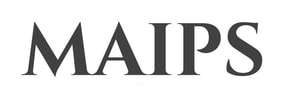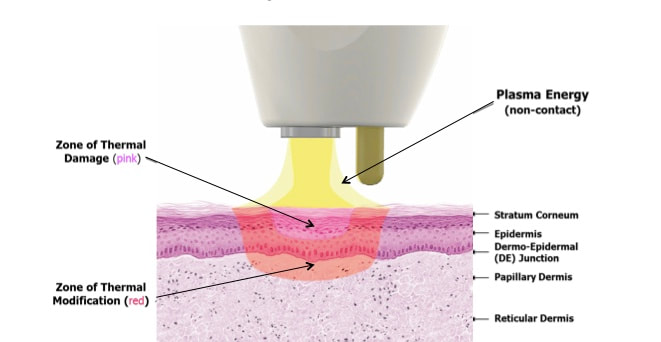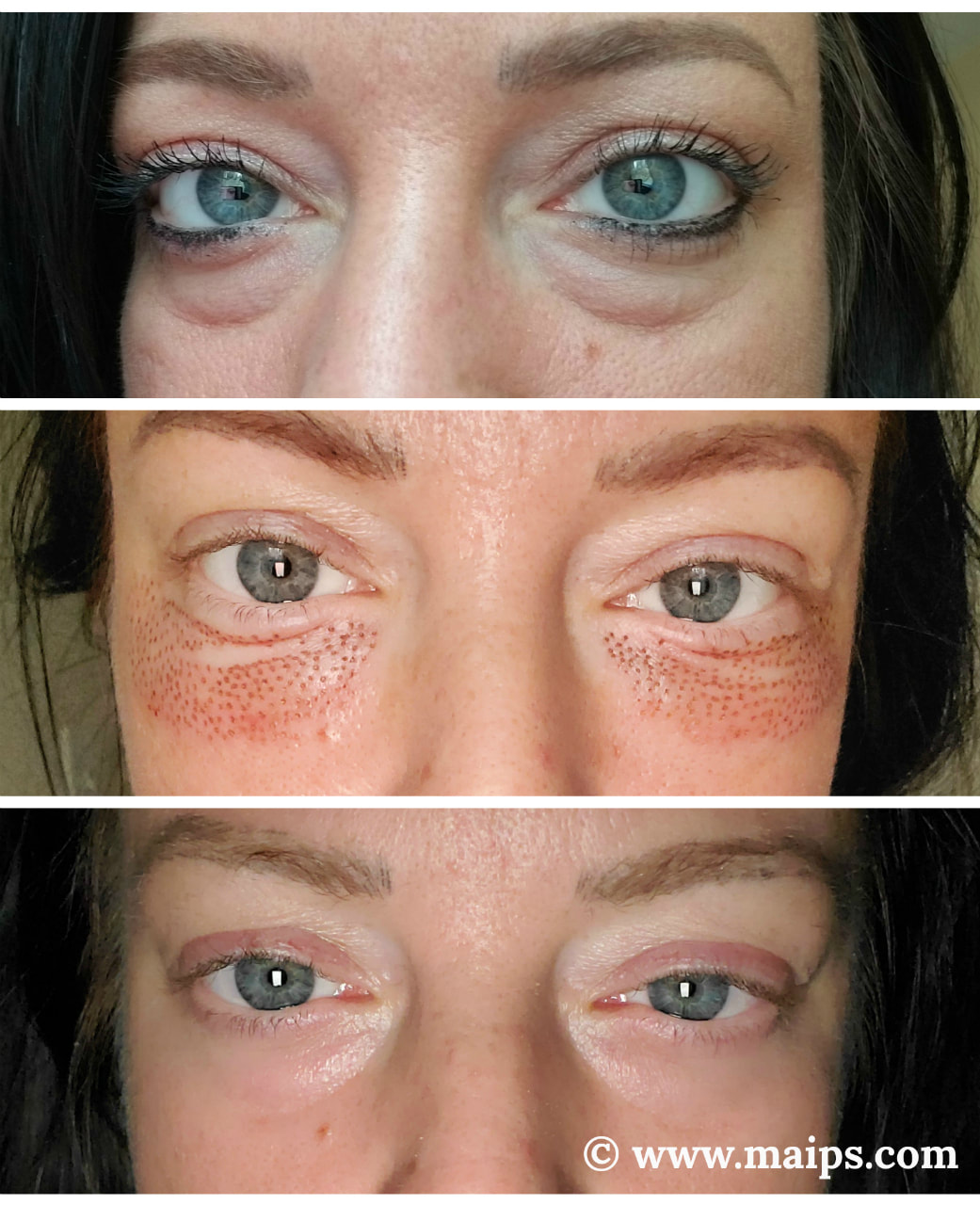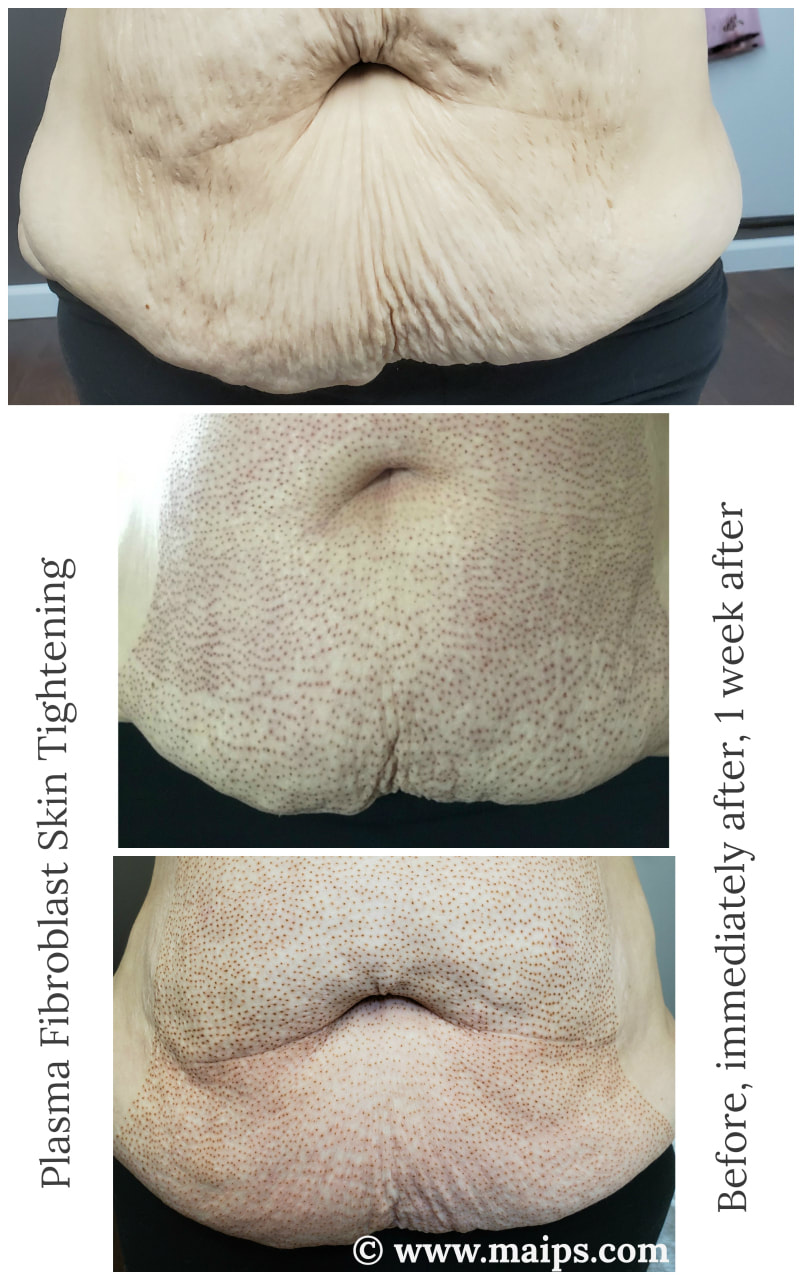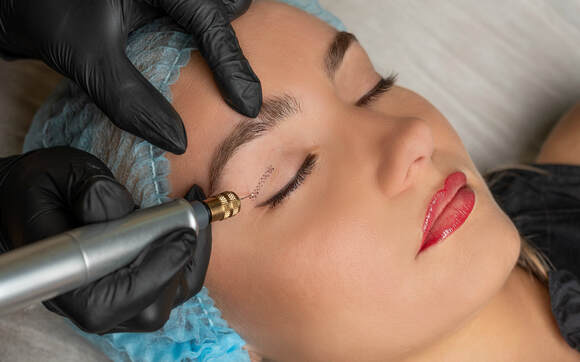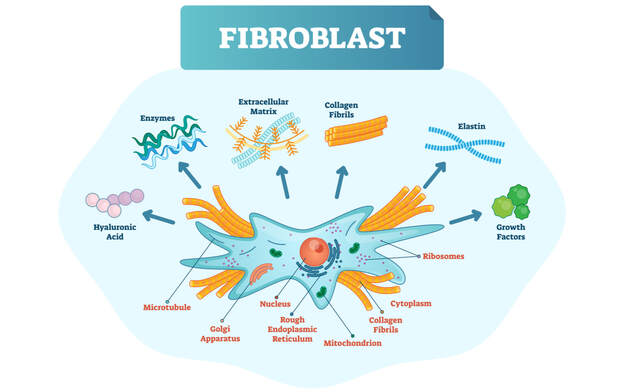Fibroblast Plasma Skin Tightening and Regeneration -
Fibroblast plasma lifting is the most permanent and effective among minimally-invasive, non-surgical treatments targeting to both lift and resurface the skin with minimal downtime.
It does not involve any injections or chemicals, because it activates skin's own capacity for healing and regeneration. The results are as permanent as from a surgical or laser skin tightening, however, without general anesthesia, long downtime, invasiveness or pain.
The treatment is also knowns as PlasmaLift procedure, Fibroblast Skin Resurfacing, Non-surgical Plasma Treatment, Softlift, Plasma Soft Surgery, Fibroblast Skin Tightening, PlasmaPen Treatment, Plasma Soft Surgery, Plasma Skin Regeneration, Fibroblast Soft Surgery.
It does not involve any injections or chemicals, because it activates skin's own capacity for healing and regeneration. The results are as permanent as from a surgical or laser skin tightening, however, without general anesthesia, long downtime, invasiveness or pain.
The treatment is also knowns as PlasmaLift procedure, Fibroblast Skin Resurfacing, Non-surgical Plasma Treatment, Softlift, Plasma Soft Surgery, Fibroblast Skin Tightening, PlasmaPen Treatment, Plasma Soft Surgery, Plasma Skin Regeneration, Fibroblast Soft Surgery.
|
Plasma Fibroblast Skin Lifting and Tightening works by applying multiple flashes of an ionized gas in a grid pattern to the skin surface to activate the Fibroblast Cells in the dermis layer of the skin.
Fibroblasts are cells that manufacture and maintain connective tissue. Activated fibroblast cells secrete molecules that create new collagen, elastin, fibronectin, and reticular fibers, which are responsible for the youthful look of the skin. The number of treatments depends on the patient's age, health and metabolism, desired degree of rejuvenation, treated area, current state of the treated area. The typical number of treatments is one or two, in rare cases - three. The skin tightening effect is immediate and continues to improve visibly over the course of the eight weeks following the procedure. However, scientific studies show that new collagen formation continues for up to one year after a fibroblast plasma treatment (Foster, 2008). What areas can be treated with a Plasma Pen? Fibroblast Skin tightening can be performed on nearly any part of the body to rejuvenate skin by addressing photo aging, wrinkles, facial lines, scars, lose skin, hyper pigmentation. What can the plasma tightening treat:
|
|
- Skin is numbed by applying a topical anesthetic to minimize the discomfort.
- During the procedure a Fibroblast pen produces a plasma flash also called an electric arc. The plasma flash, without touching or cutting the skin, creates a tiny dot on the skin, a carbon crust. The upper layer of dermis is also thermally modified to trigger rejuvenation.
- Many such points of bloodless micro-injury are created resulting in a symmetrical polka-dot grid over the treated area.
- Treatment of one area takes between 10 and 30 minutes.
- Skin is visibly lifted immediately after the procedure, however is covered with the red polka-dots, which should not be scrubbed until they fall off on their own, and they will stay on the skin some 5 to 10 days.
- An after-care cream is given by the treatment provider to apply for a couple of days after the procedure.
- The day following the procedure the treatment area is swollen. The swelling start going down two days after the procedure, and depending on the person's health and metabolism, may dissipate by the end of that day or on the third day after the procedure.
- The only down-time after the procedure is the grid of dots on the face and some swelling on days 2 and 3.
- The crust on the dots will fall off by day 5 - 10.
- Visible results continue improving up to eight weeks after the procedures
- Skin on the stomach area is different from skin on the face and pale pink dots (barely visible) will remain on the skin for about 3 - 4 weeks after the procedure.
Results are as permanent as and comparable to those of a surgical lift or an ablative laser skin resurfacing. However, depending on the skin condition and desired results, more than one procedure may be recommended.
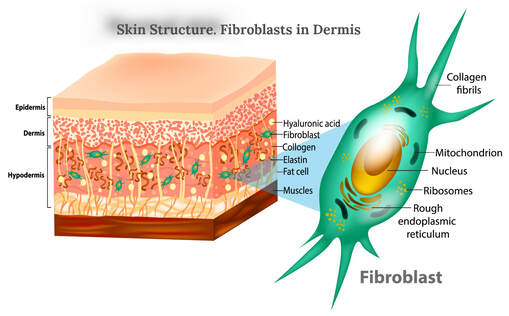
Plasma Skin Regeneration is a somewhat new, minimally invasive, method of skin tightening and resurfacing that uses plasma energy to create a thermal effect on the skin.
A fibroblast device (pen) creates flashes of an ionized gas (plasma) by passing radiofrequency intro nitrogen gas (Bogle, 2008); that flash between the tip of the device and the patient's skin delivers energy to the skin. The flash can also be described as mini lighting. The surface of the skin retracts from that flash. The energy passes through epidermis into the dermis layer.
Active plasma components, such as molecules, atoms, ions, electrons and photons, reactive species, ultraviolet radiation, optical and infrared emission and heat possess the ability to activate, control and catalyze reactions and complex biochemical procedures. (Heinlin, 2008). Those reactions and procedures occur to a large extent due to the activation of the fibroblasts in the dermal layer of the skin.
Plasma Skin regeneration is different from lasers, light sources, and ablative lasers in that it does not vaporize skin tissue, but leaves a layer of intact, desiccated epidermis that acts as a natural biologic barrier and promotes wound healing and rapid recovery.
Histological studies performed on plasma resurfacing patients have confirmed continued collagen production, reduction of elastosis, and progressive skin rejuvenation beyond 1 year after treatment (Foster, 2008).
Biologically, that mini-trauma to the skin activates fibroblast cells that secret folded molecules; the latter eventually create new collagen, elastin and other skin components responsible for how the skin looks. In this sense, this rejuvenation mechanism is similar to most other treatments involving a skin trauma that triggers the rejuvenation processes.
A fibroblast device (pen) creates flashes of an ionized gas (plasma) by passing radiofrequency intro nitrogen gas (Bogle, 2008); that flash between the tip of the device and the patient's skin delivers energy to the skin. The flash can also be described as mini lighting. The surface of the skin retracts from that flash. The energy passes through epidermis into the dermis layer.
Active plasma components, such as molecules, atoms, ions, electrons and photons, reactive species, ultraviolet radiation, optical and infrared emission and heat possess the ability to activate, control and catalyze reactions and complex biochemical procedures. (Heinlin, 2008). Those reactions and procedures occur to a large extent due to the activation of the fibroblasts in the dermal layer of the skin.
Plasma Skin regeneration is different from lasers, light sources, and ablative lasers in that it does not vaporize skin tissue, but leaves a layer of intact, desiccated epidermis that acts as a natural biologic barrier and promotes wound healing and rapid recovery.
Histological studies performed on plasma resurfacing patients have confirmed continued collagen production, reduction of elastosis, and progressive skin rejuvenation beyond 1 year after treatment (Foster, 2008).
Biologically, that mini-trauma to the skin activates fibroblast cells that secret folded molecules; the latter eventually create new collagen, elastin and other skin components responsible for how the skin looks. In this sense, this rejuvenation mechanism is similar to most other treatments involving a skin trauma that triggers the rejuvenation processes.
- Effectiveness in the overall skin improvement: wrinkles, lines, hyper pigmentation (Alster, 2007) 10 patients had one treatment on the total of 30 skin areas. RESULTS: "Mean clinical improvements of 57, 48, and 41% were observed in chest, hands, and neck sites, respectively. Significant reduction in wrinkle severity, hyperpigmentation, and increased skin smoothness were achieved."
- Acne scarring effectiveness (Gonzalez, 2008). Nine patients with acne scarring and Fitzpatrick skin types I-III were included in the study and completed a 6-months follow up. All patients underwent a single Plasma treatment with two high-energy passes (3.5-4.0 J). "Improvement was determined by patient questionnaires and physician evaluation of digital photographs taken prior to treatment and at 3 and 6 months post-treatment. RESULTS: On average, patients reported 34% improvement in their acne scarring at 3 months and 33% improvement at 6 months. Blinded physician ratings of patient photos demonstrated 19% improvement at 3 months and 34% at 6 months." There were no serious adverse side-effects. Epidermis (upper layer of the skin) was fully restores 4 to 6 days after the treatment.
- Effectiveness in a full face lifting and resurfacing (Bogle, 2008). Eight volunteers underwent three full-face treatments at 3 weeks intervals. The energy settings were 1.2 to 1.8 J. Full-thickness skin biopsy specimens were obtained from 6 patients before treatment and 90 days following the last treatment. Patients were seen for follow-up 4 days after each treatment and 30 and 90 days after the third treatment. RESULTS: Three months after treatment, investigators found a 37% reduction in facial rhytids and study participants noted a 68% improvement in overall facial appearance. Reepithelialization was complete in 4 days. Patients assessed redness to persist an average of 6 days after treatment. Epidermal regeneration from the first treatment was longer than from the following treatments (9 vs 4 and 5 days, respectively). One patient developed localized hyperpigmentation after the first treatment, which resolved by follow-up at day 30. No scarring or hypopigmentation occurred. A histologic evaluation 3 months after treatment revealed a band of new collagen at the dermoepidermal junction with less dense elastin in the upper dermis. The mean depth of new collagen was 72.3 mum.
Other minimally invasive procedures for non-surgical skin lifting and tightening are radiofrequency, ultrasound, micro needling, microcurrent, and laser.
There have been no studies that compare results side-by-side. However, judging by before and after pictures, fibroblast skin regeneration procedure produces at least as effective results, with minimal downtime, and addresses both skin laxity (lifting and tightening effect) and skin resurfacing - lines, wrinkles, skin tone.
Unlike the micro current treatment, fibroblast plasma does not affect the muscles; the lifting effect stems from tightening of the skin only.
To minimize possible side-effects and improve results after the treatment:
A fibroblast plasma pen is not a patented technology; the devices are relatively inexpensive compared to other medical aesthetic devices and are available from many manufacturers.
The procedure is considered non-invasive and may be performed by a licensed aesthetician in a medical spa.
Look for a provider that is trained and certified in using this technology and the particular device they use and has experience performing the treatment.
If you read the Clinical Studies section here, you may notice that in a study with one treatment, a higher degree of skin improvement was achieved than in a study with three treatments. The difference is likely caused by the device strength settings during the treatment. A qualified provider will know how to configure the device settings to maximize the rejuvenation effect while minimizing the downtime and risks of the side effects given a particular patient, his goals, and skin condition.
Costs vary by provider and area treated, from $300 to $2,000 per area per treatment (the price range given is for the USA).
- Avoid sun exposure for at least seven days after the treatment,
- Minimize smoking and alcohol consumption,
- Conider following a healthy diet and taking supplements that provide skin nutrients: vitamin C, hydrolyzed collagen, silica.
A fibroblast plasma pen is not a patented technology; the devices are relatively inexpensive compared to other medical aesthetic devices and are available from many manufacturers.
The procedure is considered non-invasive and may be performed by a licensed aesthetician in a medical spa.
Look for a provider that is trained and certified in using this technology and the particular device they use and has experience performing the treatment.
If you read the Clinical Studies section here, you may notice that in a study with one treatment, a higher degree of skin improvement was achieved than in a study with three treatments. The difference is likely caused by the device strength settings during the treatment. A qualified provider will know how to configure the device settings to maximize the rejuvenation effect while minimizing the downtime and risks of the side effects given a particular patient, his goals, and skin condition.
Costs vary by provider and area treated, from $300 to $2,000 per area per treatment (the price range given is for the USA).
Alster TS, Konda S. Plasma Skin Resurfacing for Regeneration of Neck, Chest, and Hands: Investigation of a Novel Device. Dermatol Surg. 2007;33(11):1315–1321. https://www.ncbi.nlm.nih.gov/pubmed/17958582
Bogle MA, Arndt KA, Dover JS. Evaluation of plasma skin regeneration technology in low-energy full-facial rejuvenation. Arch Dermatol. 2007;143(2):168–174. https://www.ncbi.nlm.nih.gov/pubmed/17309997
Foster KW, Moy RL, Fincher EF. Advances in plasma skin regeneration. J Cosmet Dermatol. 2008;7(3):169–179. https://www.ncbi.nlm.nih.gov/pubmed/18789051
Gonzalez MJ, Sturgill WH, Ross EV, Uebelhoer NS. Treatment of acne scars using the plasma skin regeneration (PSR) system. Lasers Surg Med. 2008;40(2):124–127. https://www.ncbi.nlm.nih.gov/pubmed/18306162
Heinlin J, Isbary G, Stolz W, et al. Plasma applications in medicine with a special focus on dermatology. J Eur Acad Dermatol Venereol. 2011;25(1):1–11. https://www.ncbi.nlm.nih.gov/pubmed/20497290
Higashimori T, Kono T, Sakurai H, Nakazawa H, Groff WF. Treatment of mesh skin grafted scars using a plasma skin regeneration system. Plast Surg Int. 2010;2010:874348. https://www.ncbi.nlm.nih.gov/pmc/articles/PMC3335560/
Kono T, Groff WF, Sakurai H, Yamaki T, Soejima K, Nozaki M. Treatment of traumatic scars using plasma skin regeneration (PSR) system. Lasers Surg Med. 2009;41(2):128–130. https://www.ncbi.nlm.nih.gov/pubmed/19226574
Lin MG, Yang TL, Chiang CT, et al. Evaluation of dermal thermal damage by multiphoton autofluorescence and second-harmonic-generation microscopy. J Biomed Opt. 2006;11(6):064006. https://www.ncbi.nlm.nih.gov/pubmed/17212529
Loesch MM, Somani AK, Kingsley MM, Travers JB, Spandau DF. Skin resurfacing procedures: new and emerging options. Clin Cosmet Investig Dermatol. 2014;7:231–241. Published 2014 Aug 28. doi:10.2147/CCID.S50367
https://www.ncbi.nlm.nih.gov/pmc/articles/PMC4155739/
Bogle MA, Arndt KA, Dover JS. Evaluation of plasma skin regeneration technology in low-energy full-facial rejuvenation. Arch Dermatol. 2007;143(2):168–174. https://www.ncbi.nlm.nih.gov/pubmed/17309997
Foster KW, Moy RL, Fincher EF. Advances in plasma skin regeneration. J Cosmet Dermatol. 2008;7(3):169–179. https://www.ncbi.nlm.nih.gov/pubmed/18789051
Gonzalez MJ, Sturgill WH, Ross EV, Uebelhoer NS. Treatment of acne scars using the plasma skin regeneration (PSR) system. Lasers Surg Med. 2008;40(2):124–127. https://www.ncbi.nlm.nih.gov/pubmed/18306162
Heinlin J, Isbary G, Stolz W, et al. Plasma applications in medicine with a special focus on dermatology. J Eur Acad Dermatol Venereol. 2011;25(1):1–11. https://www.ncbi.nlm.nih.gov/pubmed/20497290
Higashimori T, Kono T, Sakurai H, Nakazawa H, Groff WF. Treatment of mesh skin grafted scars using a plasma skin regeneration system. Plast Surg Int. 2010;2010:874348. https://www.ncbi.nlm.nih.gov/pmc/articles/PMC3335560/
Kono T, Groff WF, Sakurai H, Yamaki T, Soejima K, Nozaki M. Treatment of traumatic scars using plasma skin regeneration (PSR) system. Lasers Surg Med. 2009;41(2):128–130. https://www.ncbi.nlm.nih.gov/pubmed/19226574
Lin MG, Yang TL, Chiang CT, et al. Evaluation of dermal thermal damage by multiphoton autofluorescence and second-harmonic-generation microscopy. J Biomed Opt. 2006;11(6):064006. https://www.ncbi.nlm.nih.gov/pubmed/17212529
Loesch MM, Somani AK, Kingsley MM, Travers JB, Spandau DF. Skin resurfacing procedures: new and emerging options. Clin Cosmet Investig Dermatol. 2014;7:231–241. Published 2014 Aug 28. doi:10.2147/CCID.S50367
https://www.ncbi.nlm.nih.gov/pmc/articles/PMC4155739/
